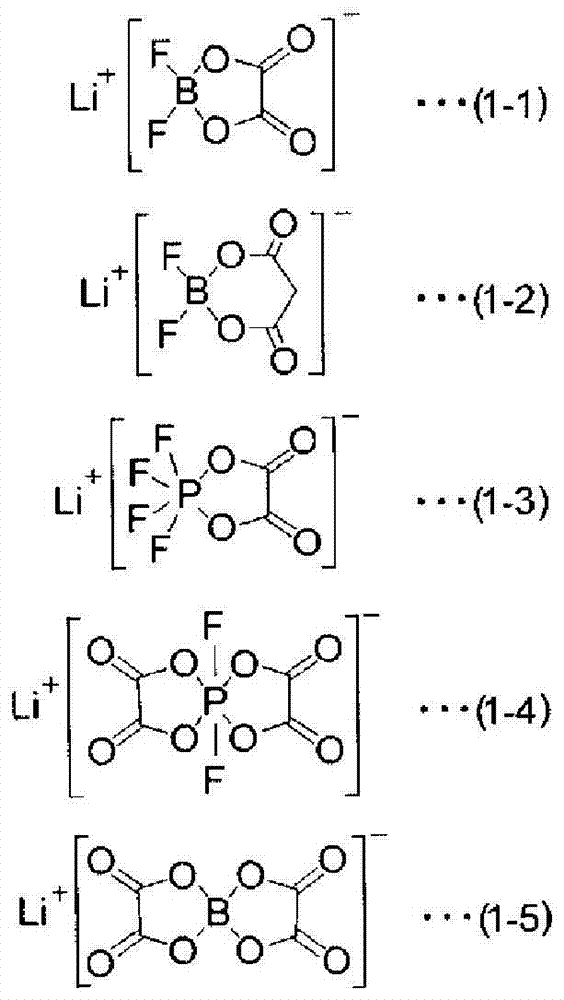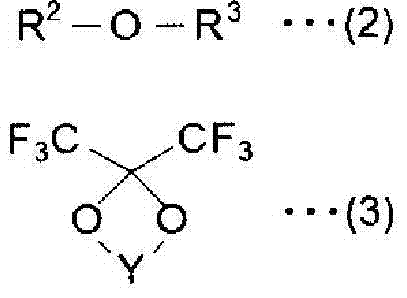Nonaqueous electrolyte solution for secondary batteries and lithium ion secondary battery
A non-aqueous electrolyte, secondary battery technology, applied in non-aqueous electrolyte storage batteries, secondary batteries, battery electrodes and other directions, can solve the problems of battery damage, thermal runaway, etc. Effect
- Summary
- Abstract
- Description
- Claims
- Application Information
AI Technical Summary
Problems solved by technology
Method used
Image
Examples
example 1
[0286] After diffusing LPF (0.15g) as a lithium salt into AE3000 (0.31g) and HFE5510 (0.54g) as a fluorinated solvent (A), mix GBL (0.34g) as a cyclic carboxylate compound (B) ) and DMC (0.15 g) as further solvent, a homogeneous solution was obtained. Then, LiFOB, which is a lithium salt, was added to this solution at a concentration of 2% by mass to prepare a non-aqueous electrolytic solution 1 .
[0287] The content of each component in the non-aqueous electrolytic solution 1 is shown in Table 1.
[0288] The positive electrode and the negative electrode were made to face each other, and a polyolefin-based microporous membrane as an electrode separator for evaluation was present between the electrodes, and the non-aqueous electrolytic solution 1 (0.1 mL) was added to form a LiCoO 2 Electrode - a battery cell 1 formed of a graphite electrode.
example 2~21
[0290] Nonaqueous electrolytic solutions 2 to 21 were obtained in the same manner as in Example 1 except that the composition of each compound such as lithium salt was changed as shown in Table 1. In addition, battery cells 2 to 21 were fabricated in the same manner as in Example 1 except that nonaqueous electrolytic solutions 2 to 21 were used instead of nonaqueous electrolytic solution 1 .
PUM
| Property | Measurement | Unit |
|---|---|---|
| electrical conductivity | aaaaa | aaaaa |
Abstract
Description
Claims
Application Information
 Login to View More
Login to View More - R&D
- Intellectual Property
- Life Sciences
- Materials
- Tech Scout
- Unparalleled Data Quality
- Higher Quality Content
- 60% Fewer Hallucinations
Browse by: Latest US Patents, China's latest patents, Technical Efficacy Thesaurus, Application Domain, Technology Topic, Popular Technical Reports.
© 2025 PatSnap. All rights reserved.Legal|Privacy policy|Modern Slavery Act Transparency Statement|Sitemap|About US| Contact US: help@patsnap.com



